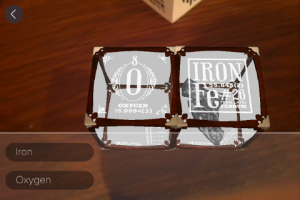Game nights are a great way for families to spend quality time together. But every once in a while, you need to shake things up a little, right? Here are three wonderful, mind-expanding activities that mom, dad, 2.5 kids (but not the dog) will enjoy.

 Brain Benders (Alex Brands)
Brain Benders (Alex Brands)
Brain Benders offer puzzle lovers a very different experience—visually, physical, and intellectually. Brain Benders pieces are made of wood (instead of flat cardboard), and you’ll use them to assemble a sphere, two different cubes, and double-pyramid shape. Besides patience and ingenuity, you’ll need some pretty well-developed spatial- and logical-thinking skills. Don’t have them? No problem. You’ll develop them pretty quickly. Having four puzzles makes it easy for families to spend time together—and compete against each other or the clock. One warning: Even though there are illustrated instructions for how to solve each puzzle, the pieces from three of the puzzles are very similar—and aren’t interchangeable. We put dots on the bottoms to help us keep the pieces organized by puzzle (one dot on all the pieces of one puzzle, two dots on another). For ages 8 and up. Available your favorite retailer for $9-$15 or at www.alexbrands.com
 Elements 4D (DAQRI)
Elements 4D (DAQRI)
Elements 4D consists of six beautifully designed, white blocks. Each face (a total of 36) is dedicated to a single element from the Periodic Table of Elements (remember that from High School?). Beside the name, there’s the symbol (O for oxygen, H for hydrogen, and so on) and the atomic number (how many protons in one atom of the element). But when you view them through a smartphone or device running the free, augmented-reality app, those blocks go from nice-to-look-at to amazing (or, as my middle schooler put it, “coooooool”). You get a more information and a virtual representation of the element. But wait, there’s more! Put two blocks next to each other, and you’ll see the chemical reaction and the resulting compound. For example, oxygen and hydrogen are both gasses, but together they become water. Similarly, combine sodium (actually a metal) with chlorine (a gas) and you get salt. These visuals upgraded “cool” to “awwwwwwesooooome.” Overall, Elements 4D is a fantastic way to introduce or develop an interest in chemistry and it’s an engaging resource for home or school. There are several small issues. First, the actual blocks are hard to find in stores. But if you go to the manufacturer’s website, you can print out paper versions, which still work with the app. Second, the app is available only on Google Play and iTunes, which leaves out those of us who primarily use Windows phones. Third, only 36 of 118 elements are included. But that could actually be a good thing, driving an interested child to want to learn more. http://daqri.com/elements4D-mobile/

 Tangle Cards (Zentangle)
Tangle Cards (Zentangle)
After a long day putting together complex wooden puzzles and experimenting with virtual chemical reactions, your brain could use a break. And Tangle Cards (also called Yoga for Your Brain) are just the ticket. Based on the Zentangle books by Sandy Steen Bartholomew, Tangle Cards guide you through the calming, creativity-stimulating process of drawing beautiful designs. Start with simple lines and curves and gradually add more and more detail. The books have more detailed instructions than the cards and include photos of Bartholomew’s inspiration. But the cards are more portable—and just as meditative. A great parent-child(ren) activity and a smartphone-free way to keep kids occupied. For ages 5 and up. Books cost around $12, cards around $10. http://www.zentangle.com/
